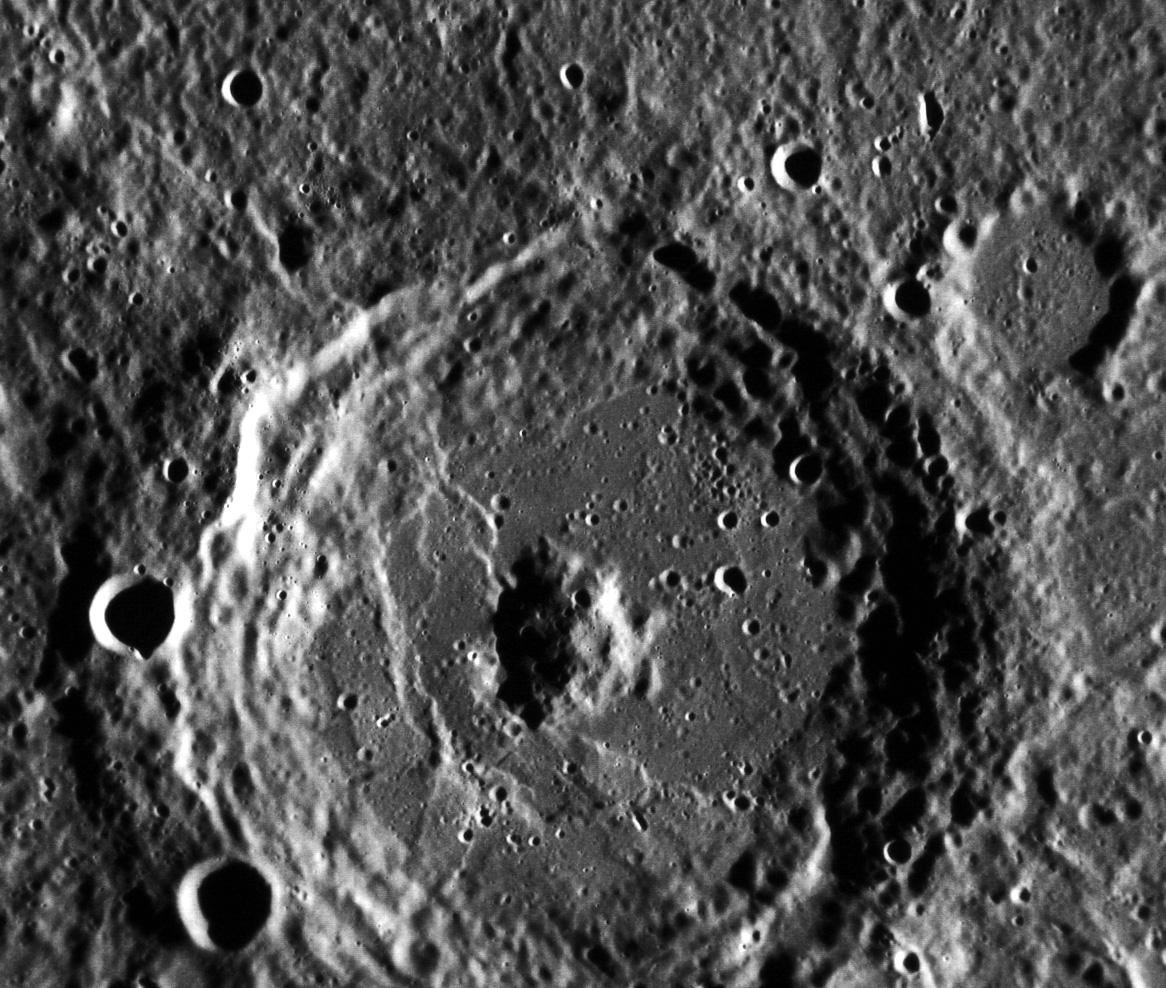[/caption]
Named after the 17th-century metaphysical poet, Mercury’s Donne crater was captured in this image by NASA’s MESSENGER spacecraft. The 53-mile (83-km) -wide crater features a large, rounded central peak and numerous lobate scarps lining its floor.
Lobate scarps are found all across Mercury. Visible above as arc-shaped ridges, they are most likely thrust faults resulting from surface compression and contraction.
Donne’s central peak has been well-eroded by impacts into a softly rolling mound. Central peaks are common features of larger craters, thought to be formed when the excavation of material during an impact springs the crater floor upwards — a process called “isostatic rebound”.
This image was acquired by MESSENGER’s Narrow-Angle Camera (NAC) on August 2, 2011.
On March 17 MESSENGER successfully wrapped up a year-long campaign to perform the first complete reconnaissance of the geochemistry, geophysics, geologic history, atmosphere, magnetosphere, and plasma environment of Mercury. The following day, March 18, marked the official start of its extended phase designed to build upon those discoveries.
“Six plus years of cruise operations, capped by a year of nearly flawless orbital operations, with an additional year of scientific return ahead in the harsh environment at 0.3 astronomical units (27,886,766 miles) from the Sun,” said MESSENGER Mission Systems Engineer Eric Finnegan at JHU/APL. All this “achieved with a 1,000 kg satellite, designed, built, and launched in less than four years for a total mission cost of less than $450 million.”
Well “Donne”, MESSENGER!
Read more about the MESSENGER mission’s extension here.
Image credit: NASA/Johns Hopkins University Applied Physics Laboratory/Carnegie Institution of Washington.

